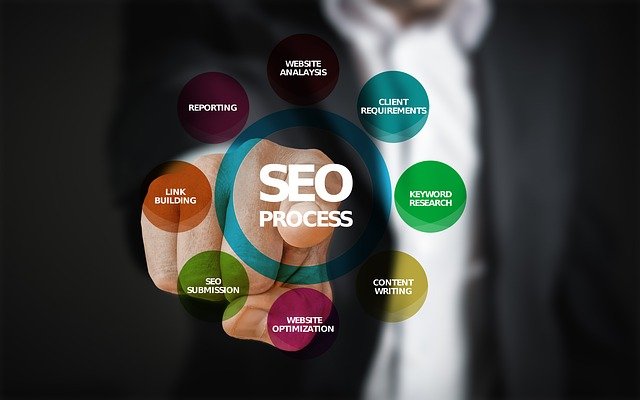Pay Per Click advertising is one of the most cost-efficient forms of marketing, and it’s particularly well suited for generating leads. What’s best is that a carefully planned PPC campaign can positively impact your SEO and give you immediate results. Businesses can use these benefits to grow their customer base and improve their bottom line. However, while PPC may seem like the easiest form of advertising to put together, campaigns will still require planning and preparation. To help you out, we will present seven tips for developing an effective PPC campaign.
-
Research your customers
PPC is a form of advertising that relies on presenting an enticing offer, which needs to interest your audience enough to click on one of your ads. You will first need to research your customers, their online behavior, and shopping habits for this to work. You can divide your audience into segments and then develop separate PPC ads for each market segment based on their interests. Accurately define the traits of your perfect customer, and once you know who you are marketing, constructing your campaign will be much easier.
You can also use PPC ads for retargeting users who have visited your website and looked at specific items. It’s often cheaper to go after an already existing prospect than to initiate a new lead into your sales process. Include listings for the items they viewed in your advertising. When developing an effective PPC campaign, you should carefully consider all of your targeting options and what you want to achieve with your marketing – which brings us to our next point.

Create detailed customer profiles to know who you will be targeting.
-
Define goals and set limitations for your budget
Before you launch any marketing campaign, including PPC, you should take a moment to think about what you want to achieve. Define your goals, how much you are willing to spend to accomplish them, and how you are going to monitor how the campaign is performing. The goals can vary and range from building awareness for your brand, generating interest for a new product launch, or simply providing your sales representatives with actionable leads.
Once you know your goals, you should set the benchmarks you are aiming for and devise methods of tracking your progress. The budget for PPC ads is another essential concern that is often neglected. Although PPC is a relatively cheap form of advertising, you should figure out how much you want to spend to generate a single lead.
-
Know your keywords and negatives
Keyword research is an integral part of SEO and any marketing campaign. However, many business owners and marketers are still unaware of the importance of negative keywords. These are specific phrases that you want to exclude from your PPC campaign. If you don’t factor in negative keywords, you could end up spending resources targeting the wrong audience. PPC works best when you accurately define all of the parameters. Since keyword research can be complicated, you can rely on experts in the field of digital marketing to help you perform a PPC analysis. Remember that you will also need to include those keywords as part of your overall SEO strategy, not just your marketing, to get the best results.

Know which keywords to include and which to omit from your PPC and SEO campaigns.
-
Optimize your website
Now that your PPC campaign is slowly taking shape, you can use some of that research to optimize your website. Search Engine Optimization can increase your customer base and help you reach more users. Your website needs to work in tandem with your marketing. Developing an effective PPC campaign will only get you so far – it can bring users to your website, but you need to give those visitors a reason to stay. A functional and optimized website with informative content can be a valuable resource for online users. Satisfied visitors will keep coming back to your site, giving you more opportunities to sell your products.
-
Have breathtaking landing pages
Although your entire website needs to be optimized appropriately, you should pay special attention to the landing pages. PPC ads will generally bring users to a specific page on your site, called the landing page. You can design different landing pages for the various versions of PPC ads you will be running. Remember that the first impression is the most important one, and create your landing pages to inspire users into immediate action.

You can use PPC ads to inspire users to sign up for your services.
-
Have a strong CTA
The Call To Action usually takes the form of a button placed on your landing page. It is intended to inspire users to perform a specific action on your site, such as subscribing to your newsletter or making a purchase. However, if you are developing an effective PPC campaign, you can also match the CTA on your landing page to your PPC ads. You shouldn’t confuse users about which action you want them to perform. Make that message clear in your marketing, and carry it over to your website. CTAs can be great for generating leads, but you will need to nurture those leads until they are ready to make a purchase. Thankfully, numerous software tools are available to help you keep track of how leads are progressing through your sales funnel.
-
Test different copies of your PPC ads
Most marketing experts recommend that you test various forms of marketing to see which has the best ROI and the most significant impact on your SEO. You can perform simple A/B tests to see which version of your ads gives better results. This type of testing is particularly effective for PPC because you can directly measure which copy has a better click-through rate.
To summarize
You can achieve great results with a carefully planned PPC campaign. You can draw more attention to your business, generate leads or boost sales, and all you need to do is follow these seven tips for developing an effective PPC campaign.





